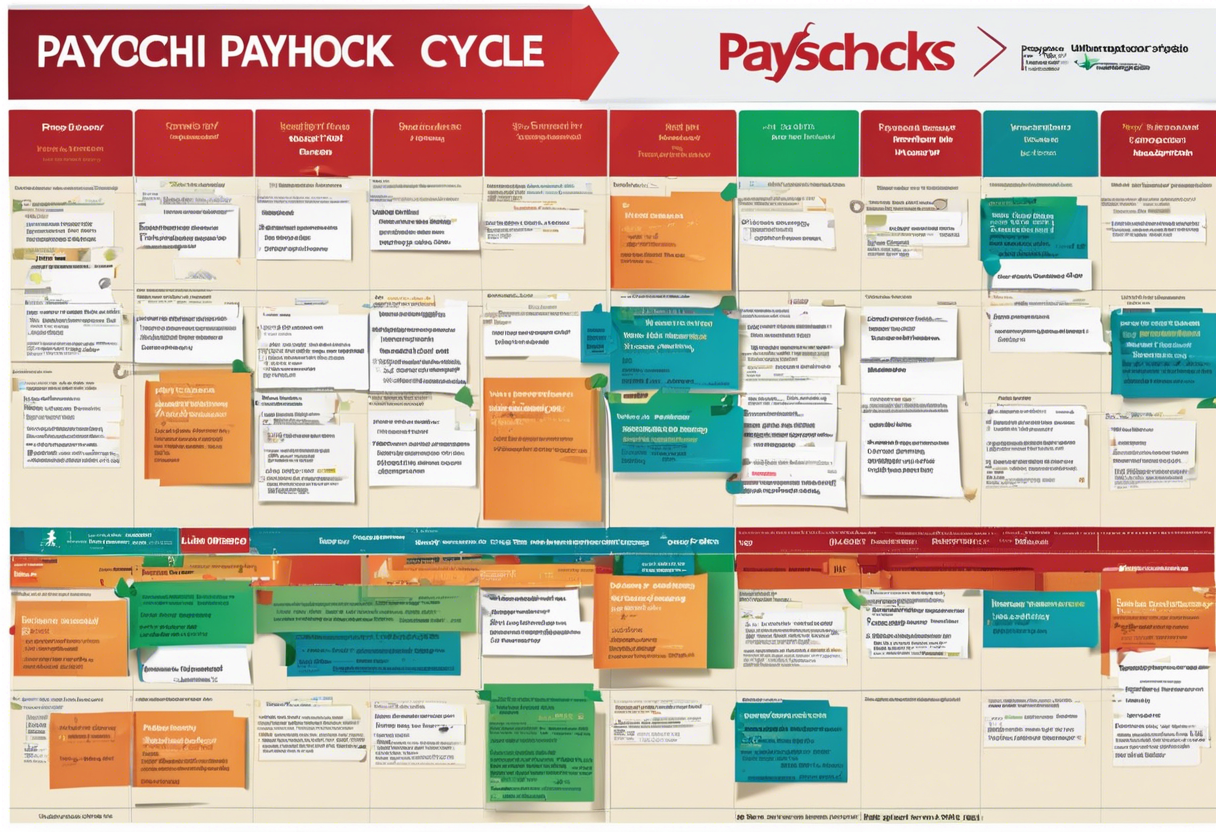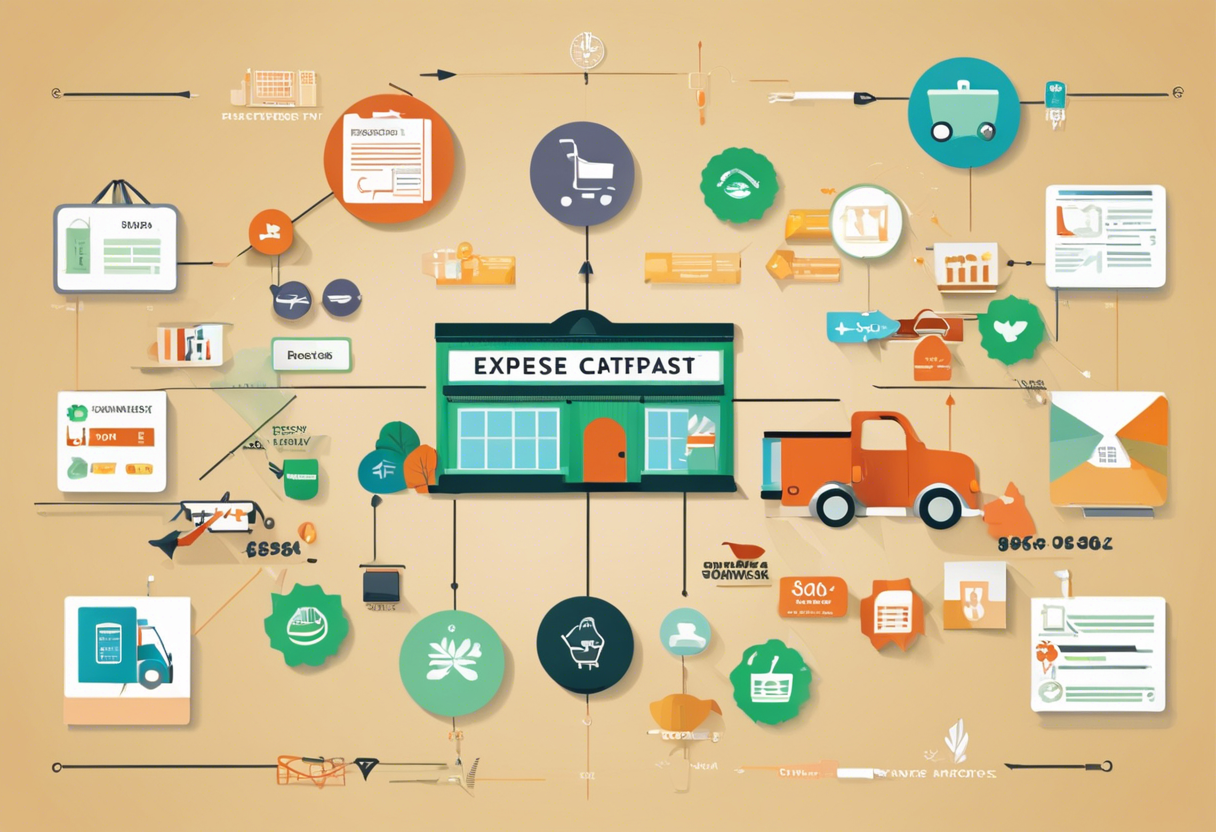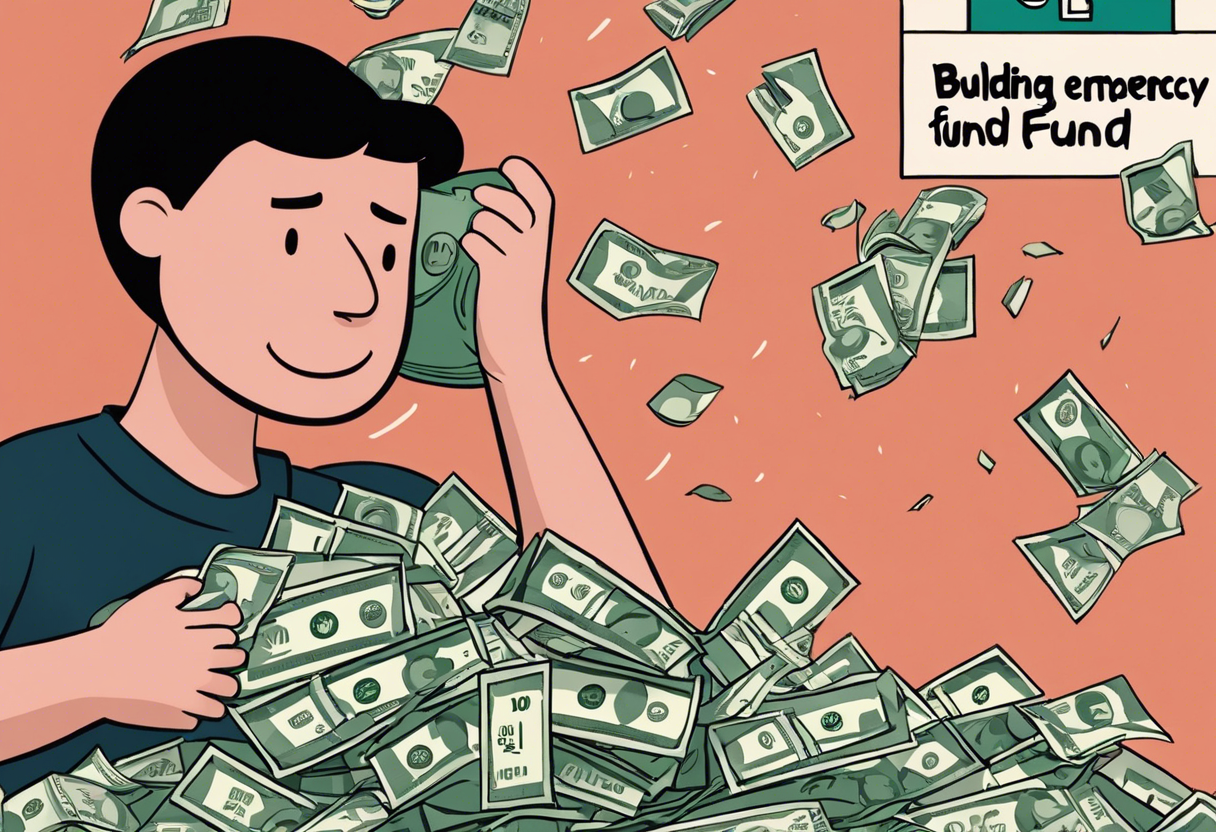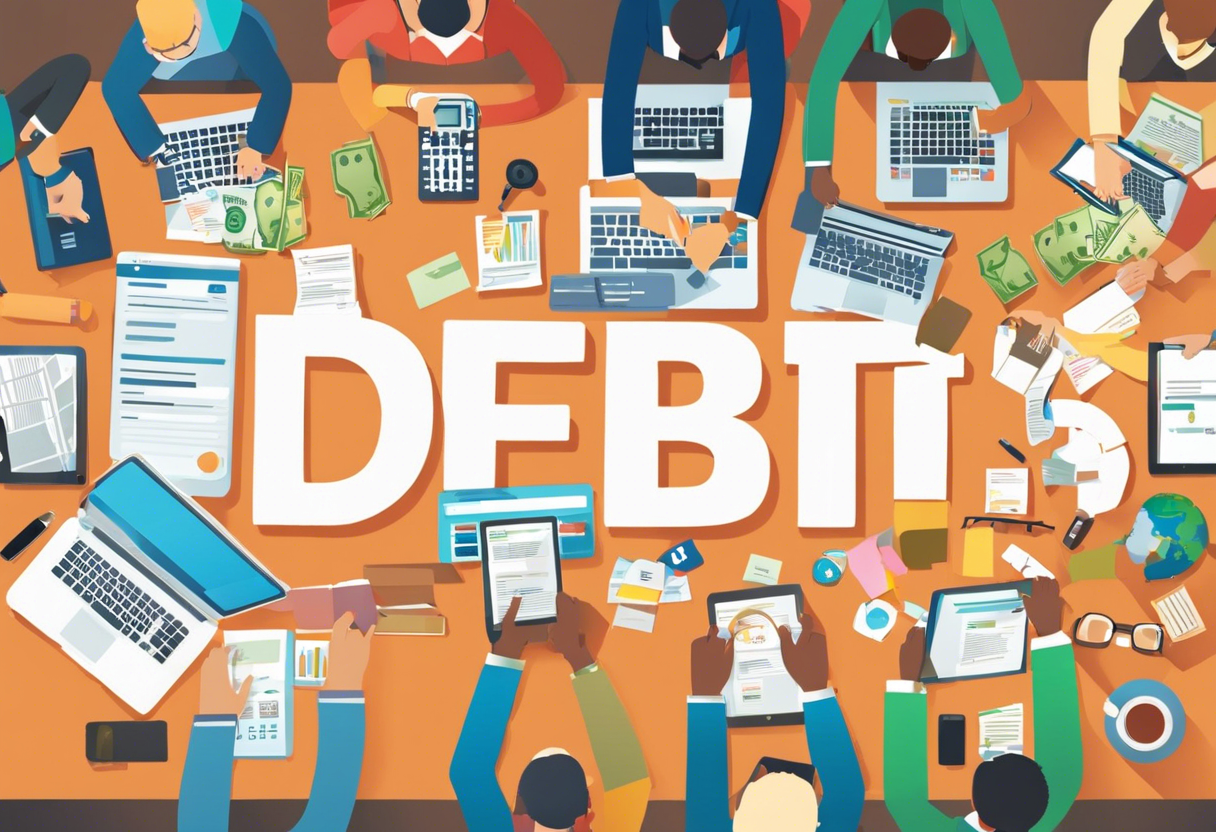Understanding the Paycheck-to-Paycheck Cycle

Living paycheck to paycheck is a situation where an individual’s income is mainly devoted to covering basic necessities, often leaving no room for savings or emergencies. To break free from this cycle, understanding its root causes is crucial:
- Budget Mismanagement: Individuals trapped in the paycheck-to-paycheck cycle often overspend without keeping track of their expenses, leading to financial instability.
- Low Income: Insufficient earnings can make it challenging to build savings or handle unexpected expenses, perpetuating the cycle.
- High Debt Burden: Debt repayment, especially with high interest rates, can consume a significant portion of income, leaving little to cover other essential expenses.
- Lack of Emergency Fund: Without savings set aside for emergencies, individuals may resort to paycheck advances or loans to bridge financial gaps, further deepening the cycle.
- Unforeseen Expenses: Unexpected costs like medical bills or car repairs can disrupt budgets already stretched thin, pushing individuals further into the paycheck-to-paycheck pattern.
Understanding these factors allows individuals to strategize and implement steps to break free from the cycle. By addressing budgeting habits, increasing income, managing debt effectively, building an emergency fund, and preparing for unforeseen expenses, individuals can gradually move towards financial stability.
Creating a Realistic Budget

- Begin by listing all sources of income.
- Track expenses for a month to understand spending habits.
- Differentiate between fixed expenses (rent, utilities) and variable expenses (groceries, entertainment).
- Set clear financial goals, such as saving for emergencies, paying off debt, or investing.
- Allocate a portion of income to each expense category.
- Consider using budgeting apps or spreadsheets to help manage finances effectively.
- Regularly review and adjust the budget as needed to stay on track.
- Prioritize savings and debt payments in the budget.
- Be realistic about spending habits and make necessary adjustments to achieve financial goals.
- Seek assistance from financial advisors or resources if needed to create a sustainable budget.
Reducing Expenses and Cutting Costs

It is essential to identify areas where expenses can be reduced to break the cycle of living paycheck to paycheck. Here are practical steps to help individuals work towards financial freedom:
- Create a Budget: Start by listing all sources of income and expenses. This will provide clarity on where money is being spent unnecessarily.
- Track Spending: Keep a record of all expenses for a few months. This will help in identifying patterns and areas where costs can be reduced.
- Cut Unnecessary Expenses: Evaluate recurring expenses like subscriptions, dining out, or impulse purchases. Consider cutting back on these to save money.
- Comparison Shop: When making purchases, compare prices from different retailers to get the best deal. This simple step can lead to significant savings over time.
- Negotiate Bills: Reach out to service providers to negotiate better rates on bills such as internet, cable, or insurance. Many companies are willing to offer discounts to retain customers.
- Reduce Energy Usage: Lower energy bills by being conscious of electricity consumption. Simple actions like turning off lights when not in use or using energy-efficient appliances can lead to cost savings.
- Cook at Home: Eating out frequently can drain finances. Cooking meals at home is not only healthier but also more budget-friendly.
- Use Public Transportation: If possible, consider using public transportation or carpooling to save on fuel and maintenance costs.
- DIY Projects: Instead of paying for services, try doing simple home repairs or maintenance tasks yourself. This can help save money on labor costs.
- Avoid Impulse Purchases: Before making a purchase, take a moment to assess if it is a necessity or just a spur-of-the-moment buy. Delaying non-essential purchases can prevent unnecessary spending.
By implementing these strategies, individuals can take significant steps towards reducing expenses and cutting costs, ultimately breaking free from the paycheck-to-paycheck cycle.
Increasing Your Income

- 1. Develop new skills: Seek out opportunities to learn new skills or enhance existing ones that can lead to higher-paying job opportunities.
- 2. Ask for a raise: If you’ve been excelling in your current role, don’t be afraid to schedule a meeting with your employer to discuss the possibility of a salary increase.
- 3. Take on additional work: Consider taking on extra shifts, freelance projects, or part-time gigs to supplement your income.
- 4. Start a side hustle: Utilize your talents and hobbies to start a small business or offer services on the side to generate additional income.
- 5. Pursue higher education: Investing in further education or certifications can open doors to better-paying job opportunities.
- 6. Look for higher-paying job opportunities: Keep an eye out for job openings in your field that offer better pay and benefits.
- 7. Negotiate your salary: When applying for a new job, don’t be afraid to negotiate your salary to ensure you’re being compensated fairly.
- 8. Invest in the stock market: Consider investing in stocks or other investment vehicles to potentially increase your wealth over time.
- 9. Rent out property: If you have extra space, consider renting it out for additional income.
- 10. Network: Building strong professional relationships can lead to new job opportunities or business ventures that can increase your income.Building an Emergency Fund

- Establishing an emergency fund is crucial for financial stability.
- Start by setting a realistic savings goal, aiming for at least 3 to 6 months’ worth of living expenses.
- Consider opening a separate high-yield savings account specifically for your emergency fund.
- Set up automatic transfers from your paycheck to ensure consistent contributions to your fund.
- Treat your emergency fund as a non-negotiable expense to prioritize saving regularly.
- Use windfalls, such as bonuses or tax refunds, to boost your emergency fund quickly.
- Remember that building an emergency fund takes time, so be patient and stay committed to your goal.
- Avoid the temptation to dip into your emergency fund for non-emergencies.
- Reassess and adjust your savings goal as needed based on any changes in your financial situation.
- Having a well-funded emergency fund provides peace of mind and financial security in times of unexpected expenses.
Paying Off Debt

Debt can be a significant obstacle on the path to financial freedom. Here are some practical steps to help individuals pay off debt and break the paycheck-to-paycheck cycle:
- Create a Budget: Developing a budget is essential to understanding where money is being spent and identifying areas where expenses can be reduced to allocate more towards debt repayment.
- Prioritize Debts: List all debts from smallest to largest or highest interest rate to lowest. Paying off debts with higher interest rates first can save money in the long run.
- Set Realistic Goals: Establish achievable goals for paying off debt. Whether it’s paying off a certain amount each month or becoming debt-free by a specific date, setting goals can provide motivation.
- Generate Extra Income: Consider taking on a side job or selling unused items to generate extra income that can be put towards debt repayment.
- Negotiate with Creditors: Reach out to creditors to negotiate lower interest rates or payment plans that better suit your financial situation.
- Consider Debt Consolidation: Consolidating multiple debts into one payment with a lower interest rate can make repayment more manageable.
- Avoid Taking on More Debt: Resist the temptation to take on more debt while paying off existing ones. Cut up credit cards or put them away to prevent further debt accumulation.
- Track Progress: Regularly monitor progress towards debt repayment. Celebrate small victories along the way to stay motivated.
- Seek Professional Help: If struggling to manage debt, consider seeking advice from a financial advisor or credit counselor to explore debt relief options.
- Stay Committed: Paying off debt requires discipline and perseverance. Stay committed to the goal of financial freedom and remind yourself of the benefits it will bring.
By implementing these steps and staying focused on paying off debt, individuals can take control of their finances and work towards breaking free from the paycheck-to-paycheck cycle. Investing in Your Future
Investing in your future is a crucial step towards achieving financial freedom. By making smart decisions and planning ahead, you can secure a stable financial future for yourself and your loved ones. Here are some practical steps to help you start investing in your future:
- Start an Emergency Fund: Building an emergency fund is essential to protect yourself from unexpected expenses and financial emergencies. Aim to save at least three to six months’ worth of expenses in a separate savings account.
- Contribute to Retirement Accounts: Take advantage of employer-sponsored retirement plans like 401(k) or set up an Individual Retirement Account (IRA). These accounts offer tax advantages and help you save for retirement.
- Diversify Your Investments: Spread your investments across different asset classes like stocks, bonds, and real estate to reduce risk. Diversification can help you achieve more stable long-term returns.
- Educate Yourself: Take the time to learn about investing and personal finance. Attend workshops, read books, and seek advice from financial advisors to make informed decisions.
- Set Financial Goals: Define your financial goals and create a plan to achieve them. Whether it’s saving for a house, starting a business, or retiring early, having clear goals can keep you motivated and focused.
- Automate Your Savings: Set up automatic transfers from your checking account to your savings or investment accounts. Automating your savings ensures consistency and discipline in your saving habits.
- Review and Adjust: Regularly review your investment portfolio and financial goals. Make adjustments as needed based on changes in your life circumstances, risk tolerance, and market conditions.
- Seek Professional Advice: Consider consulting with a certified financial planner or advisor to get personalized investment advice tailored to your specific goals and situation.
- Stay Patient and Disciplined: Investing for the future is a long-term endeavor. Stay patient during market fluctuations and stick to your investment plan with discipline.
- Monitor Your Progress: Track your investment performance and financial goals regularly. Monitoring your progress can help you stay on track and make necessary adjustments to achieve financial success.
Setting Financial Goals

Setting financial goals is the first crucial step in breaking the paycheck-to-paycheck cycle. Without clear objectives in mind, it can be challenging to stay motivated and focused on improving one’s financial situation. Here are some practical tips to help set effective financial goals:
- Define Your Goals: Take the time to clearly define what you want to achieve financially. Whether it’s paying off debt, building an emergency fund, or saving for a specific purchase, having specific goals will give you a target to aim for.
- Make Your Goals SMART: Ensure that your financial goals are Specific, Measurable, Achievable, Relevant, and Time-bound. For example, instead of saying, “I want to save money,” a SMART goal would be, “I will save $500 per month for six months to build an emergency fund.”
- Prioritize Your Goals: If you have multiple financial goals, prioritize them based on urgency and importance. Focus on tackling one goal at a time to avoid feeling overwhelmed.
- Break Down Big Goals: If your financial goal seems daunting, break it down into smaller, manageable milestones. This can make the process feel more achievable and help you track your progress along the way.
- Regularly Review and Adjust: Financial goals are not set in stone. It’s essential to regularly review your goals, track your progress, and make adjustments as needed. Life circumstances change, and your financial goals may need to adapt accordingly.
- Celebrate Milestones: Acknowledge and celebrate your achievements along the way. Whether it’s paying off a credit card or reaching a savings milestone, celebrating your progress can help keep you motivated to continue working towards financial freedom.
By setting clear, achievable financial goals, individuals can take the first step towards breaking the paycheck-to-paycheck cycle and working towards long-term financial security.
Practicing Financial Discipline and Consistency

Financial discipline is crucial in breaking the paycheck-to-paycheck cycle and achieving financial freedom. Consistency in implementing good financial habits is key to building a stable financial foundation. Here are some practical steps to help you practice financial discipline and consistency:
- Create a Budget: Establishing a budget allows you to track your income and expenses, helping you stay within your financial limits.
- Track Your Spending: Keep a record of where your money is going to identify areas where you can cut back and save.
- Establish an Emergency Fund: Set aside money in an emergency fund to cover unexpected expenses, reducing the need to rely on credit or loans.
- Automate Savings: Set up automatic transfers to your savings account to ensure you consistently save a portion of your income.
- Avoid Impulse Purchases: Before making a purchase, consider if it aligns with your financial goals and if it is a necessary expense.
- Limit Use of Credit Cards: Use credit cards responsibly and avoid carrying high balances to prevent accumulating debt.
- Review Your Finances Regularly: Take time to review your budget and financial goals regularly to make adjustments as needed.
- Set Financial Goals: Establish short-term and long-term financial goals to keep you motivated and on track with your financial plan.
- Seek Financial Education: Educate yourself on personal finance topics to make informed financial decisions and improve your financial literacy.
- Stay Accountable: Consider sharing your financial goals with a friend or family member to help you stay accountable and motivated.
By practicing financial discipline and consistency, you can gradually break free from the paycheck-to-paycheck cycle and work towards achieving financial stability and independence.
Seeking Professional Financial Advice

Seeking professional financial advice is a crucial step in breaking the paycheck-to-paycheck cycle and achieving financial freedom. A financial advisor can provide personalized guidance based on your unique financial situation and goals. Here are some reasons why seeking professional financial advice is beneficial:
- Customized Financial Plan: A financial advisor will assess your current financial status, understand your long-term goals, and create a customized financial plan tailored to your needs.
- Investment Strategies: Professional financial advisors have expertise in developing investment strategies that align with your risk tolerance and financial objectives. They can help you make informed investment decisions to grow your wealth.
- Debt Management: If you are struggling with debt, a financial advisor can help you develop a plan to pay off debt strategically, save on interest payments, and improve your overall financial health.
- Retirement Planning: Planning for retirement is essential for long-term financial security. A financial advisor can help you create a retirement savings plan, maximize your retirement accounts, and ensure you are on track to achieve your retirement goals.
- Tax Efficiency: Financial advisors can help you optimize your tax strategy by identifying tax-saving opportunities, maximizing deductions, and ensuring compliance with tax laws.
In conclusion, seeking professional financial advice is a wise investment in your financial future. A financial advisor can provide the expertise and guidance needed to help you break the paycheck-to-paycheck cycle, build wealth, and achieve financial freedom.
